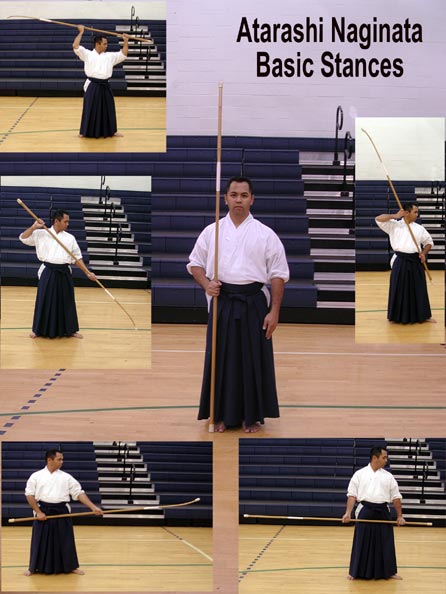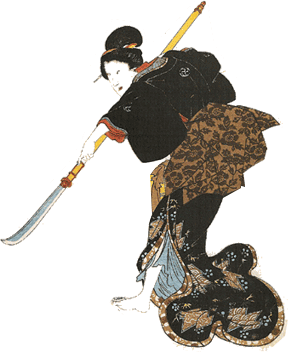Nichibukan Naginata
Naginata in New York City and New Jersey
Dojo Affiliation
Nichibukan Naginata is a member dojo of the East Coast Naginata Federation (ECNF) and the United States Naginata Federation (USNF), which is a member of the International Naginata Federation (INF).
What is Naginata?
The naginata is an ancient Japanese pole arm that is essentially a Japanese sword blade mounted on a long handle. The blade varies in length from as short as 6 inches to over 2 feet with the average blade being around 15 inches long. They also vary in the amount of curvature and width of the blade. The length of the pole also varies from as short as 2 or 3 feet to over 10 feet long. The average pole is around 6 feet long. These changes reflect the different uses and needs over the past 1000 years.
The early users of naginata were foot attendants to the samurai, and warrior monks. The primary use was to cut horses legs during battles. In about 1400 the fighting style changed to using a long straight spear in massed formations. The naginata was not suited for this style of warfare. It then was left home for the women to guard the house and castle with. All samurai class women were trained to use the naginata and a small dagger.
In Japan today, naginata is taught as a means of physical fitness and spiritual enhancement for girls in Junior High School and up. They have various levels of contests from the "Empress Cup" for the individual All Japan Champion down to local club and school contests. Because of this background, the vast majority of naginata participants in Japan are women. In the USA, the United States Naginata Federation has roughly 40% men.
There are two types of training offered:
Atarashii Naginata, a more competitive form of training, and
Tendo Ryu Naginata-jutsu, a Sogo Ko-ryu that is over 450 years old.
There is not any starting point for the training. These are taught on an ongoing basis with much individual instruction given to beginners.
Basic Postures for Naginata

Basic Targets for Naginata

Comparison of Naginata Types

Equipment & Uniform
Atarashi naginata are used for basic training. These cost about $70. For advanced students, they should have Tendo Ryu naginata, which cost around $90.
Uniforms are a white keiko-gi with a white obi (belt) and a dark blue or black hakama. A complete set of keiko-gi, obi, and hakama should cost between $100 & $200 depending upon quality. Beginners do not need this to begin practice. There is no significance to obi color as to rank in naginata. The color is one that does not clash with the keiko-gi. Bogu (protective body armor) are necessary for those who wish to compete in shiai (contests). Kendo bogu can be used with the following changes: Sune-ate (shin guards) are added and the kote (gloves) are changed to the naginata style kote. While the Men (helmet) from a Kendo bogu can be used, the Naginata Men is different and more appropriate. Bogu is a major expense for those who wish to participate in shiai. The cost ranges from several hundred to several thousand dollars depending upon quality. Bogu are not necessary for promotion until 1kyu (just before black belt).
Other useful, but not necessary equipment are knee pads (worn under hakama) and sori for walking from changing area to dojo floor.
Membership & Training Costs
See the instructor, or contact: naginata@ny-jss.org
